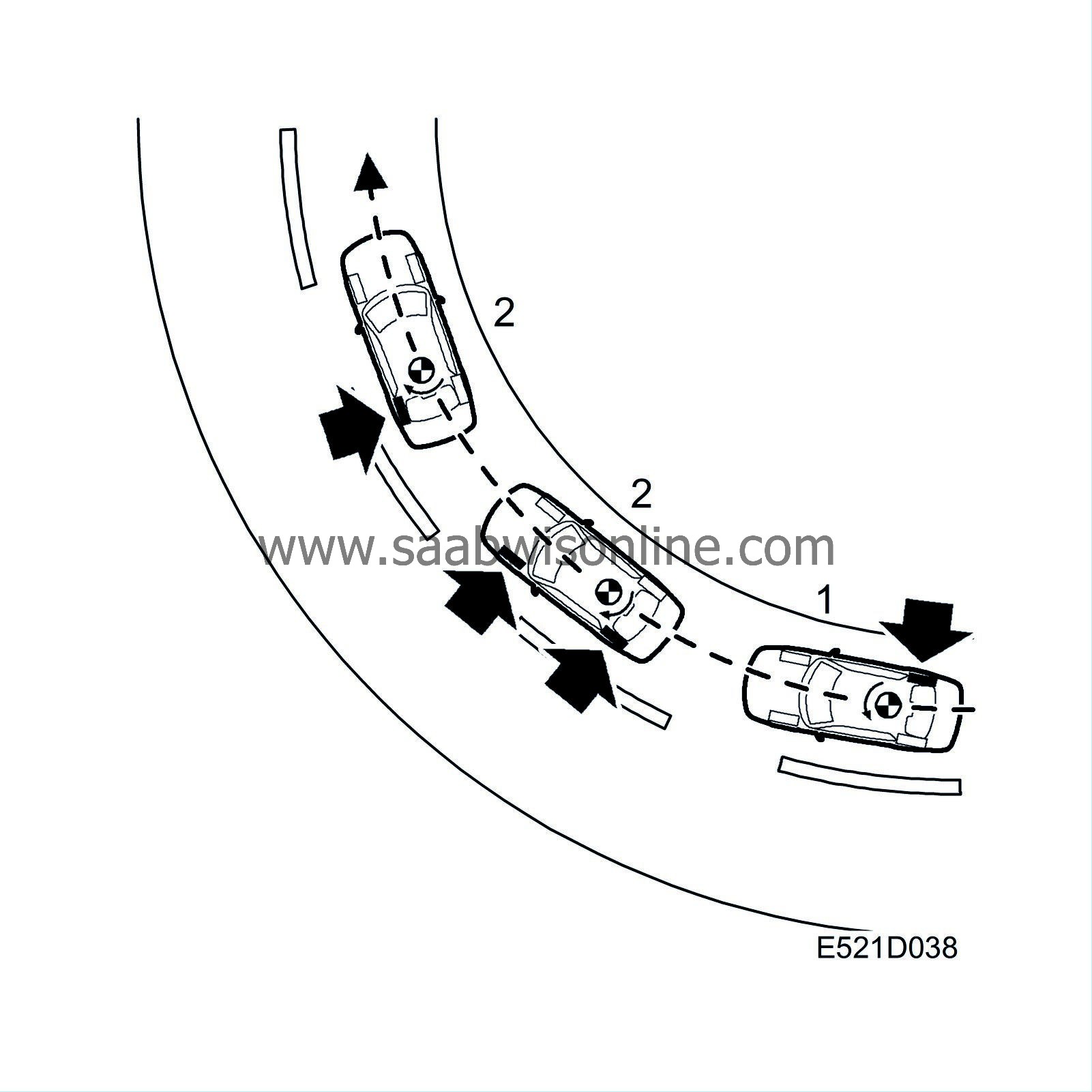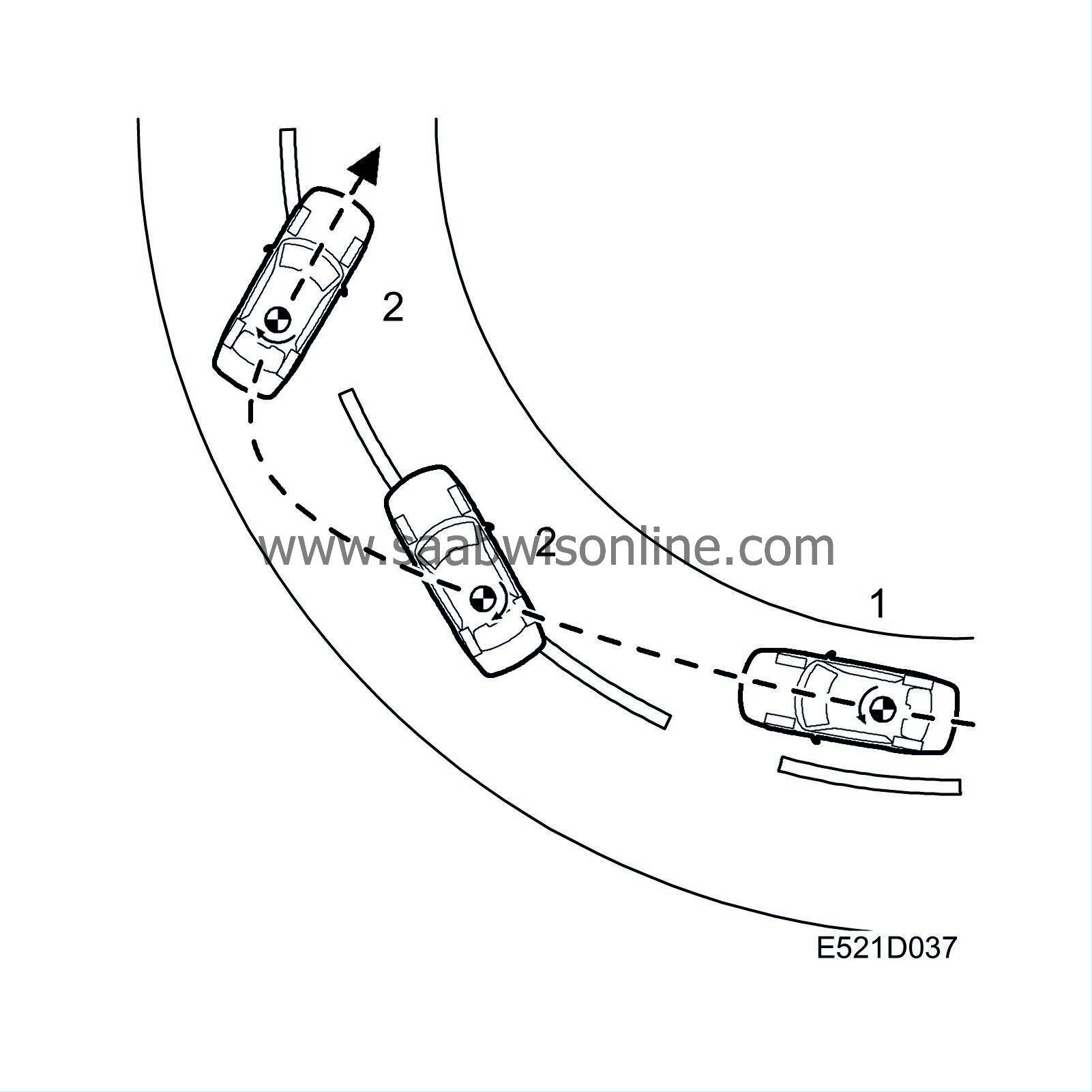PRE-RELEASE
ESP function
| ESP function |
ESP is a stability system that helps to keep the vehicle on the right course when cornering, taking evasive action, braking and accelerating. The stabilising effect of the ESP system is based on calculations made by the control module, which evaluates information sent from the various system sensors:
| • |
Wheel speed sensors
|
|
| • |
Steering wheel angle sensor
|
|
| • |
Yaw rate sensor
|
|
| • |
Lateral acceleration sensor
|
|
| • |
Brake pressure sensor (integrated)
|
|
Data from these sensors informs the control module of the driver's intentions, e.g. in which direction the driver wishes to drive, if the driver is braking, etc. The ESP control module, integrated in the hydraulic unit, continuously calculates the direction of the vehicle, the actual value, and compares this with desired direction indicated by the steering wheel, the desired value.
| • |
If the car starts to understeer (when the front tends to continue straight ahead in a bend) the yaw rate sensor measures a lower value than that calculated. The system applies the brakes on the inside rear wheel until the measured and calculated yaw rates agree.
|
|
| • |
If the car starts to oversteer (the rear tends to drift out) the measured yaw rate will be greater than that calculated. The system will apply the brakes on the outside wheels until the measured and the calculated yaw rates correspond.
|
|
When the system is activated, it can counteract a skid by braking one or two of the wheels without the driver needing to touch the brake pedal. The system reduces engine torque after an engine torque request to the engine control module and applies the brakes on the wheels individually.
The ESP system comprises three different functions: ABS, TCS and ESP. ABS and TCS have the same function as earlier. See the respective description of operation.
The wheel brake is the fastest and most powerful method of braking a spinning wheel, while engine torque limitation is the smoothest and most comfortable method. These two methods are often employed simultaneously while some cases demand brake application.
If the car starts to understeer (1) the yaw rate sensor measures a lower value than that calculated. The system applies the brakes on the inside rear wheel until the measured and calculated yaw rates agree.


If the car starts to oversteer (2) the measured yaw rate will be greater than that calculated. The system will apply the brakes on the outside wheels until the measured and the calculated yaw rates correspond.
| Engine torque regulation |
Engine torque regulation takes place after bus communication with the engine control module. The ESP control module requests an engine torque between -100 and +400 Nm. This is achieved through ignition retardation and throttle control, i.e. by changing the throttle angle and the boost pressure (air mass/combustion). Using engine torque regulation means that the brakes need not be applied as often, resulting in a higher degree of comfort.
These actions mean that kinetic energy in the drive wheels is converted into heat in both cases. Applying the brakes heats the wheel brakes and ignition retardation increases the exhaust temperature. Ignition retardation is not allowed at high exhaust temperatures to protect the turbocharger and catalytic converter.
| Brake application |
The brakes are applied through the ESP control module governing the pump motor, the pressure increase and pressure relief valves, and the inlet and outlet valves in the hydraulic unit so that the braking force on each wheel can be controlled individually. The ESP control module receives information on the brake pressure from the brake pressure sensor. This information is used to control the braking force on each wheel to correspond to the braking force applied by the driver. An ESP regulated wheel is controlled using the ESP criteria.
Both front wheels and rear wheels are connected to the pressure increase and pressure relief valves in the hydraulic unit. This arrangement allows each wheel to be controlled independently.
Friction is estimated by calculating the drive wheel torque during acceleration (which is a function of the engine torque) or braking (which is a function of braking force).
If performing evasive action during emergency braking, the vehicle can be manoeuvred by regulating the braking pressure applied by the driver using the control module and the pump. The applied braking force on each wheel can therefore be both above and below that requested by the driver.
Braking distance is given priority when braking in a straight line and stability is given priority during evasive action. ESP can be active both when the driver applies the brakes and without the driver even touching the brake pedal.


